MONROE, CT — Several Board of Education members say Jockey Hollow Middle School parents tell them their children are unhappy with the quality of food in its cafeteria.
Jockey Hollow participates in the National School Lunch program (NSLP), which requires dietary and nutritional standards limiting menus to meals with ingredients such as wheat pastas, brown rice and whole grain breads.
The Board of Education is considering taking the school off program, so students have more desirable food options to choose from, while still eating relatively healthy. Years ago, the board took Masuk off the NSLP.
“Off program, you can serve pretty much whatever you want, with the exception of beverages,” Superintendent of Schools Joseph Kobza said, recalling how Masuk can no longer include soda in its vending machines.
However, taking JHMS off program is not without financial implications.
Participating in the National School Lunch program gives a school advantages, such as cash subsidies and USDA foods at reduced prices, as well as low cost and free meals for qualifying students.
“I’m okay anyway we go,” Kobza said during the Board of Education’s meeting Monday night. “My concern is being fiscally responsible. Lunch should be a budget neutral thing.”
When the Board of Education took Masuk out of the NSLP, Kobza said the district’s food vendor expressed confidence the move would be budget neutral.
Christine Cascella, secretary of the school board, said they had also considered taking Jockey Hollow out of the program, but it was during a budget year and the financial impact was uncertain.
Dennis Condon, a board member, suggested having an analysis done to see what the district will be getting into should it take Jockey Hollow off program.
The school district’s food vendor, Sodexo, would be the best one to do such an analysis, but a new contract is currently being bid on. The request for proposal (RFP) already went out and it does not include an analysis.
There was consensus among board members for Finance Director Ronald Bunovsky Jr. to find out from the state whether or not an addendum can be added to the RFP to include an analysis of the cost of taking JHMS off program.
Tastier options at JHMS
In rare company
Assistant Superintendent of Schools Jack Ceccolini prepared a presentation explaining the different school lunch plans. It included a map showing the programs other Connecticut districts participate in.
Should JHMS go off program, it will be in rare company.
The vast majority of the map, 184 of 192 eligible districts (95.8 percent), was green, indicating participation in Healthy Food Certification, a state program in which districts must also participate in the NSLP. Connecticut Nutrition Standards must be followed for all foods, including the cafeteria, school store, vending machines and fundraising.
Districts in this program receive an additional 10 cents per lunch based on the total number of reimbursable lunches from the prior year.
“We usually vote not to be on Healthy Food Certification and the reason is, in order to be a Healthy Food Certified district, every school needs to be in the National School Lunch program,” Kobza said. “We haven’t been in the National School Lunch program at Masuk now for at least the last seven to 10 years.”
Another reason is the strict nutritional requirements must be met for all food provided by the schools, according to Kobza.
Seven school districts on the color coded map were white, indicating they are not Healthy Food Certified but do participate in the NSLP. Eleven districts were yellow, meaning those schools are ineligible for Healthy Food Certification and do not participate in the NSLP.
Monroe’s reimbursement
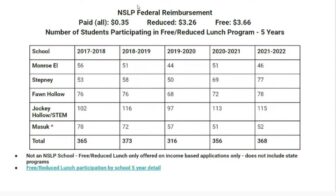 The superintendent showed board members statistics from 2018-19, the last regular year before the COVID-19 pandemic, to provide a snapshot of the financial reimbursement Monroe Public Schools receives for its school lunch program.
The superintendent showed board members statistics from 2018-19, the last regular year before the COVID-19 pandemic, to provide a snapshot of the financial reimbursement Monroe Public Schools receives for its school lunch program.
That year, school cafeterias served 156,294 reimbursable meals, 22,356 free meals and 9,196 reduced meals for a total reimbursement of $150,197.
The Healthy Hunger-Free Kids Act provided another seven cents a meal for a total of $10,940 and a state reimbursement match of four cents a meal brought in another $7,792. The district also received $60,450 worth of food from a USDA Cost Supplement.
Total reimbursement for the district was $229,379.
The cost of paid lunches would have to be increased to make up for lost reimbursement, because Kobza said it must be paid for with profits from the lunch program.
Jerry Stevens, a board member, asked how much lunches went up at Masuk when it went off program a few years ago. “I don’t think it was more than two dollars,” Cascella said.
Justin Orlando, a board member, noted how there is only a 15 cent difference between the standard lunch at Masuk and Jockey Hollow right now, $3.90 at Masuk and $3.75 at Jockey Hollow.
Ceccolini’s presentation included a chart showing the number of students eligible for free and reduced lunches over the past five years. The total for 2021-22 is 368 students districtwide with 115 at Jockey Hollow, the highest among the town’s schools.
“One thing that jumped out to us today is there are about 316 students in K-8 on the free or reduced lunch program of roughly 2,300,” Kobza said. “We’re looking at 15 or 16 percent. The one thing I would caution if we were to go off program, we would have to make that up.”
By comparison, Kobza said 52 of 1,000 students, around five percent, are eligible at Masuk, which is off program. One reason for the drop in students between Jockey Hollow and Masuk is stricter participation standards for the high school.
The school district allows families on SNAP, receiving federal assistance for food, and whose household income meets requirements to have free or reduced cost lunches for their children at Masuk.
Tastier options
The cost of a standard lunch at Monroe’s elementary schools is $2.95, and at Jockey Hollow it is $3.75. A deli lunch is $4.25.
Masuk, which is off program, charges $3.90 for a standard lunch with a free and reduced lunch option. Each meal includes a hot item and two sides. French fries do not count as a side.
Aside from the hot item of the day, Masuk students can opt to buy a burger or pizza instead.
The cost of items outside the standard lunch are higher. Food from the deli, chicken tenders and fries are $5.25; salad is $4.25; a burger and fries is $4; pizza by the slice is $1.75; and fries are two dollars.
While some have criticized the quality of food at Jockey Hollow, not everyone agrees that more students are throwing food away.
“I don’t see as much in waste,” Kobza said. “I would suggest before we make broad generalizations, if you want to visit, go visit and eat lunch.”
Jockey Hollow Principal Michael Crowley said, “I’m not seeing a lot of waste.”
“It was a long time ago, but I did cafeteria duty for 34 years and more was eaten than thrown away,” said Stevens, a retired teacher. “I know it was a long time ago but, especially at that age, they just eat.”
“If they’re starving, they might eat,” Orlando said. “But are they eating good, quality food?”
Chairman David Ferris said it would be interesting to know how many lunches are being bought, and Stevens suggested sending a survey out to parents for their input on food quality.
Orlando said he has heard complaints from parents over food quality and believes taking Jockey Hollow off program is something the board should consider.
“The options there, from what I’m hearing, are not great,” Orlando said. “I don’t think you’re having as many people take advantage of the school lunch. I’m getting feedback the quality is not great. It’s not like the nutrition is any more enhanced.”


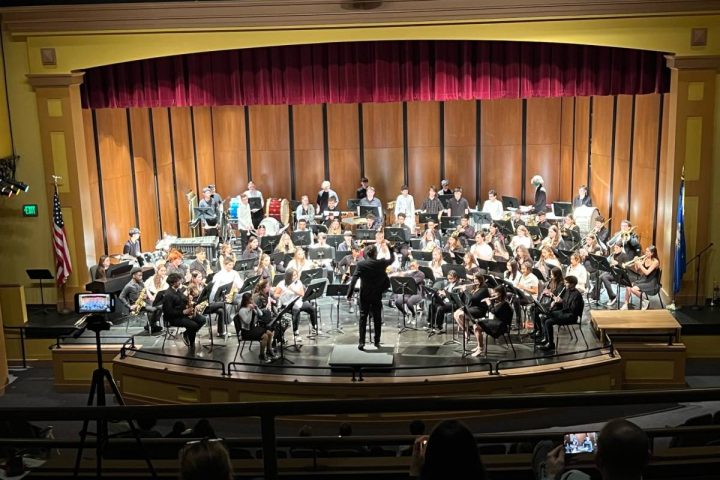
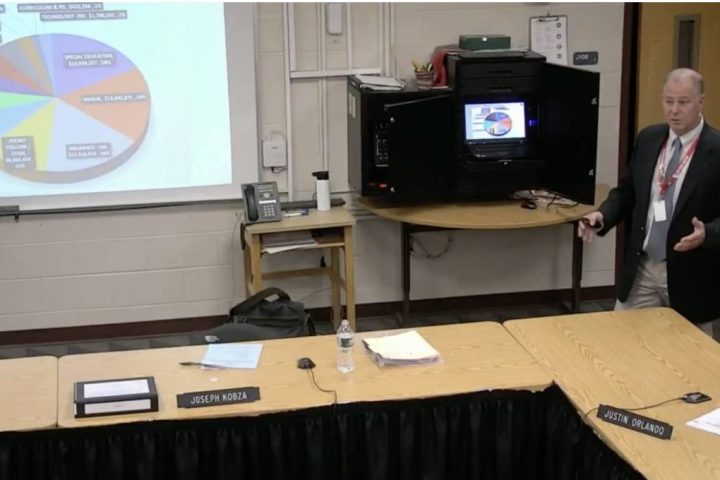
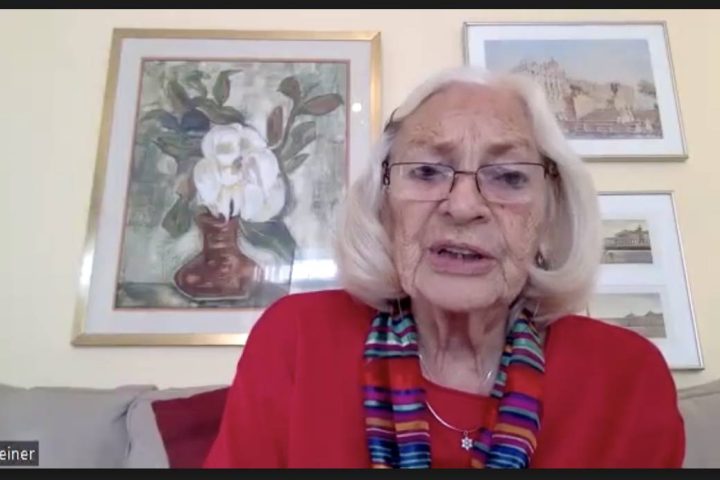
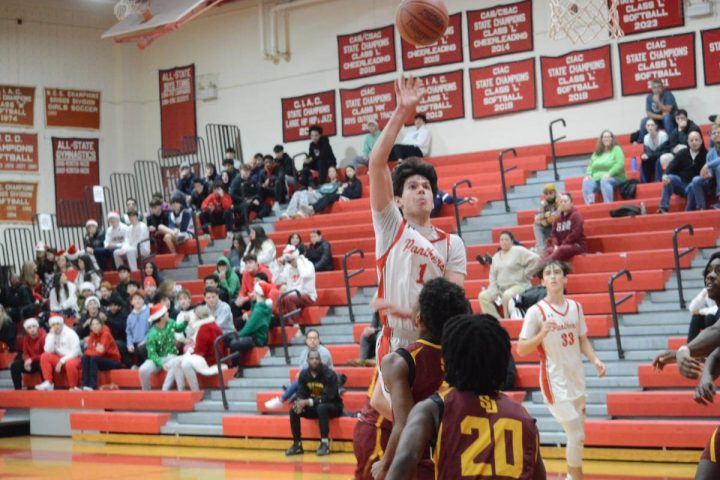



Just to be clear, there is no data to support an increase to cost by removing jockey hollow. Actually, since the criteria to provide free and reduced lunches would be less restrictive, there would be less free meals to reimburse, therefore lowering the overall exposure.
Also, the NSLP nutritional standards are not exemplary in any way. Today for example, there are no daily salad options at Jockey Hollow, but that would change if we got off the NSLP.
Mr. Orlando, who would be providing the difference to the town for students in need of free or reduced lunches should we remove the NSLP program?
Are you willing to go on record pledging your full support for guaranteed funds to cover 100% of the cost to provide qualifying students healthy meals should Jockey Hollow, and potentially other schools in the district, move away from this program as a priority in the Board of Ed. and Town budgets?
I am asking you to go on record on this matter as an elected official.
I feel that I should clarify that I’m looking for your support for every student who currently qualifies for these programs, not a revised set of standards that may change eligibility.
For the record, my child has deadly food allergies and always brings his own lunch, but I know a number of children in the district who need this programming and want to make sure they are not left behind with this change.
If everyone is covered then I don’t have an issue dropping the program, but my reading of these facts suggest that we would see potentially hundreds of children each year without access to healthy meals if we moved to the proposed new system, and since there are already a number of disputes over how much of the town budget is going into supporting the schools, it seems to me that staying with this program prevents us from needing to add another substantial budget line annually while caring for the needs of local children.